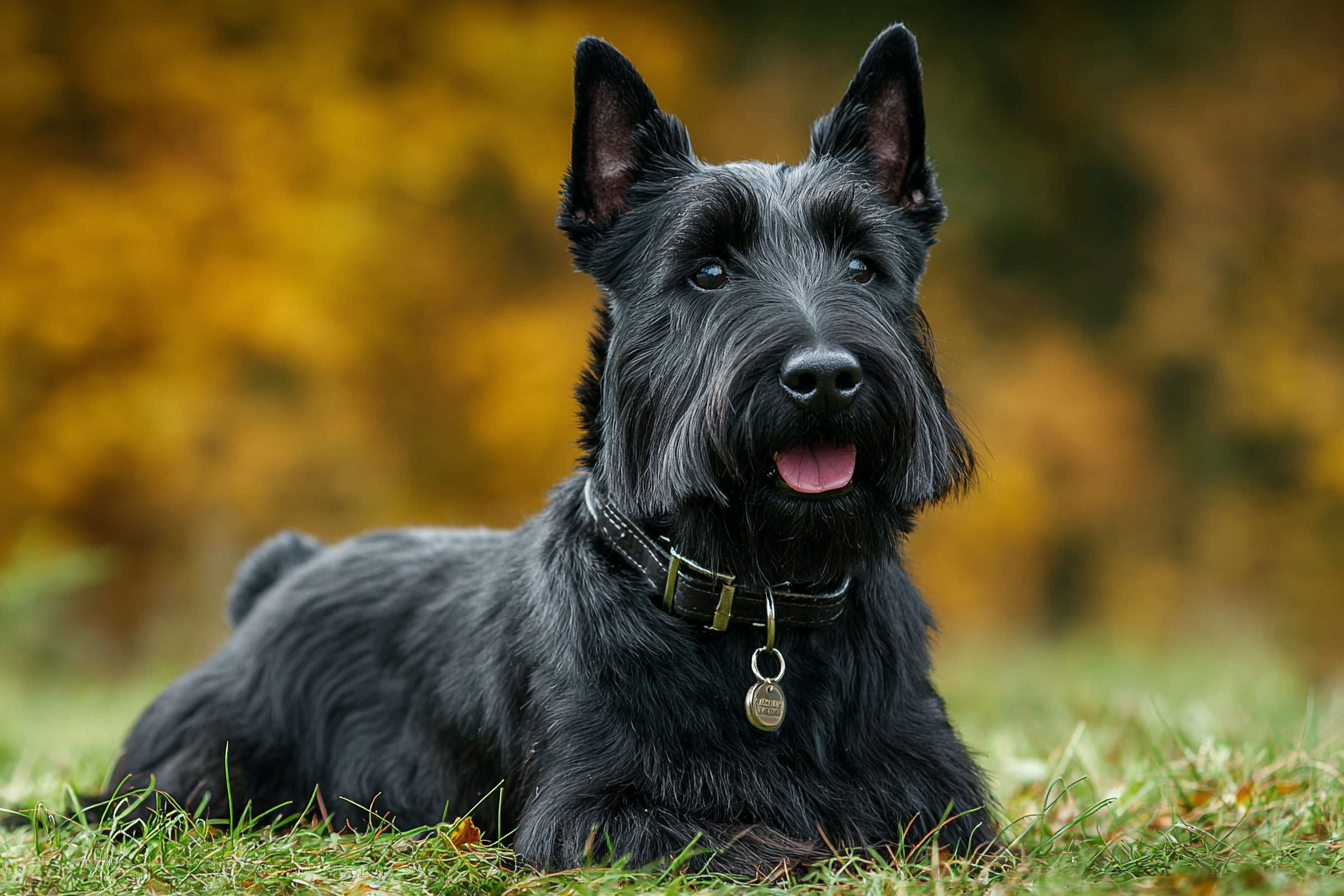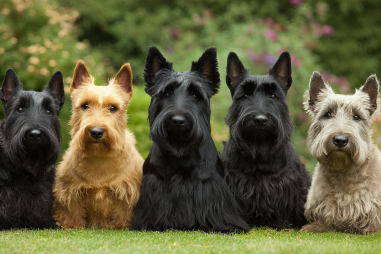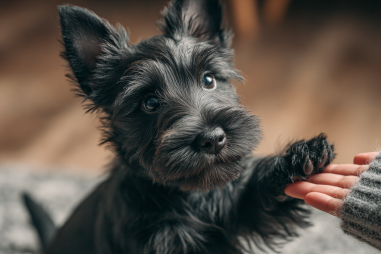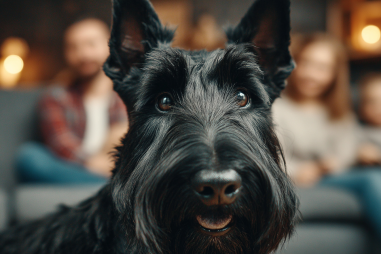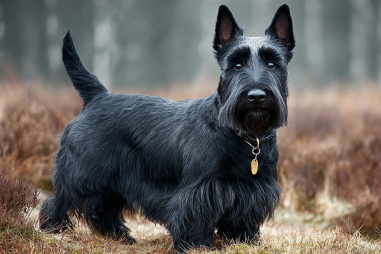The Scottish Terrier, with its distinct silhouette and unmistakable personality, has captured the hearts of dog lovers around the world. Often affectionately called the “Scottie,” this breed’s charm goes far beyond its adorable features. The history and origin of the Scottish Terrier reveal a rich tapestry of cultural significance, dedicated breeding, and a legacy that has spanned centuries. Join us as we explore the fascinating journey of this iconic dog, uncovering its roots, development, and lasting impact.
Earliest Records and Ancestry
The Scottish Terrier’s lineage traces back hundreds of years to the rugged highlands and lowlands of Scotland. The earliest records suggest that terrier-type dogs were commonly found in Scotland as far back as the 15th century, used primarily for hunting vermin such as rats, foxes, and badgers. These small, resilient dogs were prized for their determination and ability to dig out prey from burrows and rocky terrain.
While the exact ancestry of the modern Scottish Terrier is somewhat debated, it is widely believed that the breed evolved from several native Scottish terrier breeds. Early types such as the Skye Terrier, Cairn Terrier, and the West Highland White Terrier share common ancestors. These dogs were grouped under the general category of “Scottish terriers” until breed distinctions became more clearly defined in the 19th century.
Role in Scotland’s Culture and History
Scottish Terriers have been more than just hunting dogs in their homeland—they are deeply embedded in Scotland’s cultural fabric. Their tough exterior and spirited nature made them a symbol of Scottish pride and tenacity. In rural Scotland, these dogs were indispensable on farms, keeping the property free of pests and protecting livestock. Their presence was also noted in Scottish folklore and art, often seen as companions to the Scottish people through periods of change and hardship.
Moreover, the Scottish Terrier is often associated with specific clans, further highlighting its cultural significance. These dogs served as faithful companions to many Scottish families, embodying values such as loyalty, courage, and independence.
Development of the Breed Standard
The transformation from a practical terrier to a recognized breed took shape during the 19th century when dog shows and breed clubs flourished across the United Kingdom. Scottish dog fanciers and breeders began to standardize the breed’s appearance and temperament to reflect the best qualities of the “typical” Scottish Terrier.
In 1879, the Scottish Terrier Club was established, and efforts were made to define the breed in official terms. The Scottish Terrier was characterized by its wiry coat, compact body, distinctive beard, and bushy eyebrows. Breeders sought to preserve the dog’s working ability while focusing on an elegant yet sturdy appearance.
The breed was officially recognized by The Kennel Club in the UK in 1885, and shortly after, the American Kennel Club followed suit in 1888. These introductions brought the Scottish Terrier onto the global stage and spurred its popularity beyond Scotland’s borders.
Famous Scottish Terriers Through History
Numerous Scottish Terriers have gained fame for their remarkable personalities and connections to notable figures. Perhaps the most famous historical Scottish Terrier was “Fala,” the beloved companion of U.S. President Franklin D. Roosevelt. Fala became a wartime mascot and cultural icon during the 1940s, embodying loyalty both to his family and country.
Beyond Fala, Scottish Terriers have been popular pets among celebrities, royalty, and political leaders. Their dignified yet playful nature has made them ideal companions for those in the public eye, further cementing their status as beloved and prestigious dogs.
The Breed’s Spread Worldwide
From their humble origins in Scotland, Scottish Terriers made a remarkable journey across continents. In the late 19th and early 20th centuries, Scottish immigrants and dog enthusiasts helped introduce the breed to the United States, Canada, Australia, and beyond. Their distinctive appearance and charismatic personality quickly made them popular at dog shows and as household pets.
Today, the Scottish Terrier is recognized in dog clubs all over the world. The breed enjoys continued popularity for its loyal temperament, adaptability to urban and rural life, and relatively manageable size, making it suitable for a variety of lifestyles.
Cultural and Symbolic Significance
More than just a pet, the Scottish Terrier carries rich symbolic weight. In Scotland and abroad, the breed is often seen as a symbol of tenacity and strong will. Their ability to tackle challenges head-on reflects the resilient spirit associated with the Scottish Highlands themselves.
The Scottish Terrier has also become a muse for artists, writers, and filmmakers. Their image has appeared in posters, cartoons, and advertisements, further embedding them in popular culture. Their strong connections to political figures and royalty give them an aura of prestige and nobility unlike many other terrier breeds.
Some Scottish families even keep the Scottie as part of their heritage, passing down stories of beloved dogs across generations. This perpetuates the breed’s cultural significance, blending familial pride with national identity.
Honoring Tradition and Heritage
Understanding the Scottish Terrier’s history enriches our appreciation of the breed. They are much more than their charming looks; they carry centuries of tradition, resilience, and cultural symbolism within their small frames.
Whether as reliable working dogs in rugged landscapes or loyal companions in modern homes, Scottish Terriers continue to embody the characteristics that made them an enduring part of Scotland’s heritage. By respecting and honoring this heritage, breeders and enthusiasts worldwide ensure that the spirit of the Scottish Terrier thrives well into the future, keeping alive a fascinating chapter of canine history.

